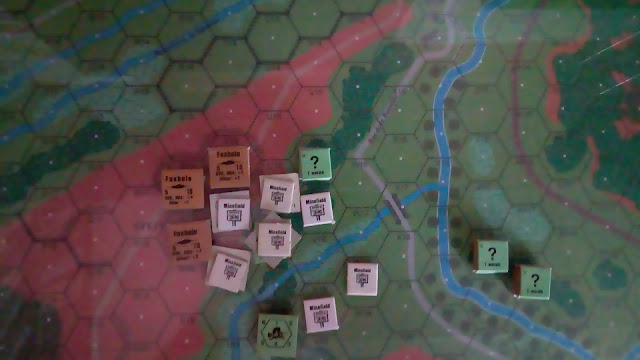As you may have gathered, I recently received my long awaited copy of Race to the Meuse . Overall, I am pretty pleased with the quality and whatever else you have to say about RttM, you will have to admit that it is a pretty unique situation in ASL for reconnaissance to meet with roadblocks and hasty defense. Until I get my hands on a VASL map, it looks like I'm going to be playing these solo. So I start at the beginning with RM1 Wisembach Roadblock. RM-1 Wisembach, Belgium : Driving along the main road, south of the river, and the railroad tracks on the north bank, elements of the 1.Kradschützen-Kompanie, pushed towards of Bodange. Southeast of Bodange, German motorcyclist turned at Wisembach to attempt an approach from the south. At Wisembach, Sergeant Renauld of the 1er Régiment de Chasseurs Ardennais, having watched the destruction of the bridge across the Sûre River earlier that morning, now waited for the approaching Germans A small 6-turn scenario with an estimated p




